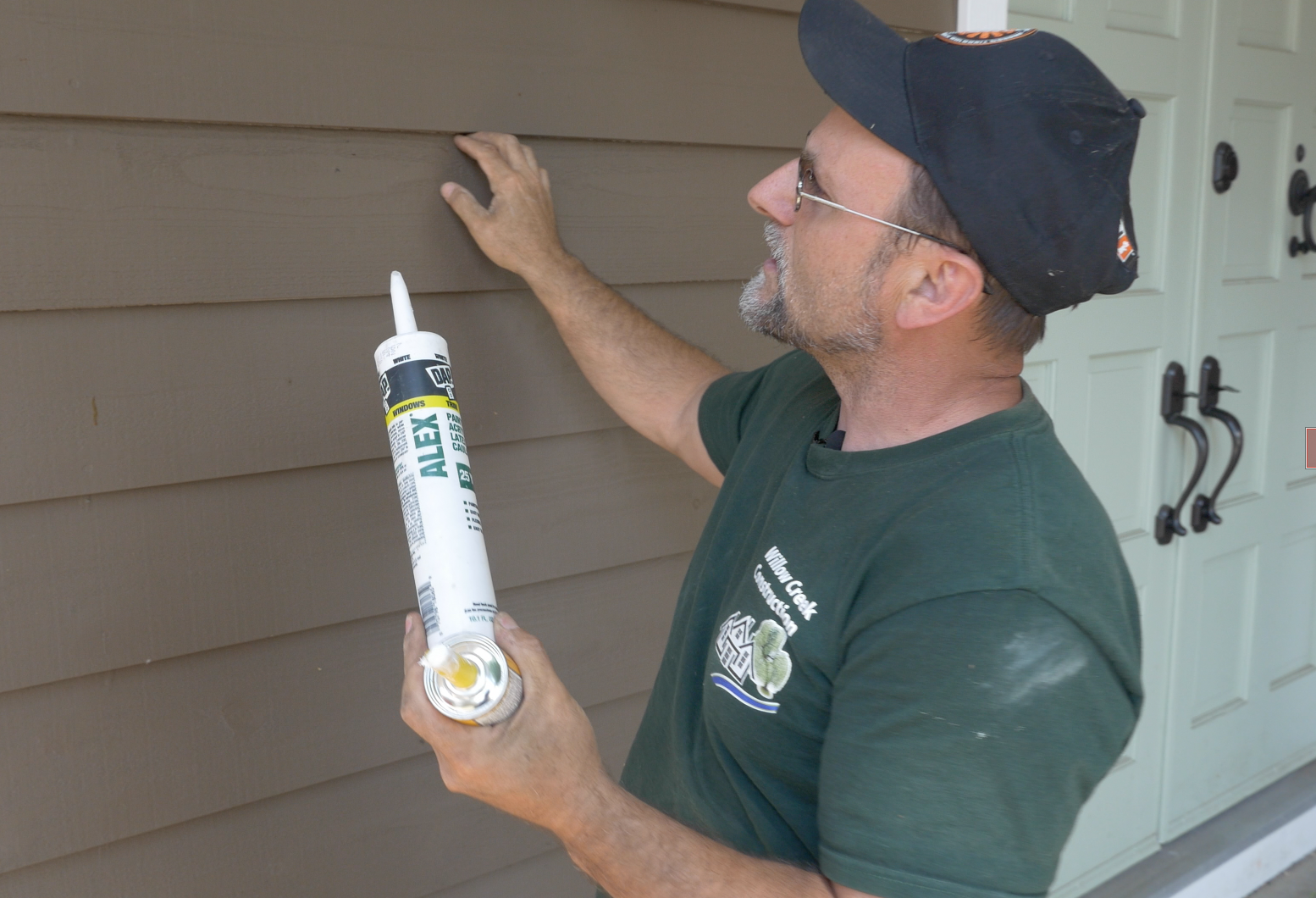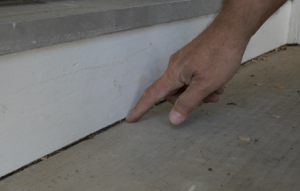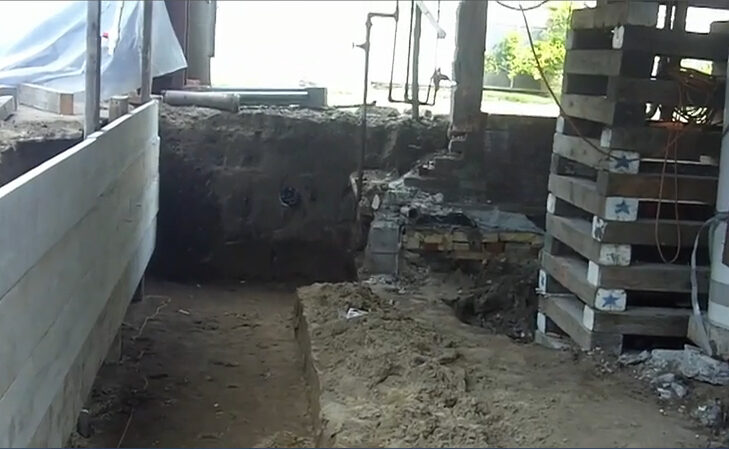
After a seemingly endless summer, the Bay Area is finally getting some authentic autumn weather, with cooler temperatures and rain on the horizon. As we close out a year marked by extreme weather, it’s anyone’s guess what winter will bring, which is why residents should be prepared for anything, including excessively cold and wet conditions. If you’re a homeowner, this means making sure your home is in adequate shape to withstand such conditions. To learn more, we’ve asked six Diamond Certified Expert Contributors to provide their insights on how to prepare a home exterior for winter weather.
Touching up House Paint
Due to house paint’s crucial protective function, you need to ensure yours is in good shape before rainy weather sets in. “House paint isn’t just for looks—it actually protects the wood siding and trim from the elements,” explains Steve Daniel, president of Steve Daniel Construction Inc. “When house paint isn’t maintained, it often results in the need for costly repairs, including removal of dry rot and replacement of damaged siding boards.”
To avoid this scenario, Mr. Daniels recommends having your house paint touched up every three to five years. When a new paint job is needed, he says the indicators should be obvious. “If you notice the paint is starting to peel or looks like it’s deteriorating, it’s time for a new paint job.”
Sealing Exterior Gaps
Even if your house paint is in good condition, there still may be areas of your home exterior where moisture, cold air and even rodents can penetrate. To identify these, Leo Diaz, president of Diaz and Sons Construction, recommends performing a walkaround inspection of your home and looking for the following issues:
Missing/protruding nails
Exposed nail holes can allow water to penetrate your roof and siding, which can potentially lead to dry rot issues.
Missing/worn-out caulking
Caulking is used to seal gaps around windows, doors and other areas from moisture intrusion. However, it isn’t permanent, so you’ll need to reapply it periodically.
Unsealed gaps around eaves
Eaves are the parts of your roof that hang out over the walls. It’s easy to overlook gaps around the eaves, but they can provide an easy conduit for rodents to enter your home, so keep an eye out and seal any that you find.
Moisture on the insides of window panes
This may be a sign that the window’s seal has deteriorated, or it may be a symptom of failed exterior caulking. If it continues to be a problem, consult a professional.

Unsealed gaps in your home exterior can create a vulnerability to moisture intrusion. Photo: Willow Creek Construction ©2020
Blaine Munsch, owner of Willow Creek Construction, emphasizes the importance of checking for and sealing exterior gaps. “When exterior gaps aren’t sealed, it leaves them vulnerable to moisture intrusion from rainy weather. The residual moisture from this water intrusion is a common catalyst for the development of dry rot, a harmful fungus that softens wood and compromises its stability. Once dry rot has gained a foothold, it can spread into your walls and flooring, creating potentially dangerous conditions.”
Examples of areas that may require sealing include gaps in door and window trim, as well as between siding panels. Mr. Munsch recommends sealing these and other vulnerable areas with high-quality caulking that’s rated for exterior use. Mike Chavez, president of Mike Chavez Painting, adds that you should clean any surface that you plan to seal before applying caulking. “When caulking is applied to bare wood or a dirty surface, it’ll peel off a lot quicker and require early reapplication,” he explains. “To maximize the durability of your caulk job, make sure it has a clean, coated surface to stick to.”
To learn more about sealing your home exterior, watch Mr. Munsch’s video below:
Inspecting Your Roof
While most parts of your home exterior are affected by rainy weather, your roof takes the brunt of the impact, which is why regular inspection and maintenance are critical. Michael Davis, president of Davis Roofing Group, says that even though this requires some financial investment, it’s cheaper than the alternative. “It’s a lot easier and less expensive to maintain a roof than it is to replace one. And when a roof isn’t properly maintained, it typically needs to be replaced a lot sooner than anticipated.”
Mr. Davis points out two “trouble areas” on the roof that require ongoing attention:
Valleys
These are intersections where two sections of the roof slope down to meet each other. Debris tends to collect in valleys, and if it isn’t routinely cleared out, it can hinder the roof’s natural drainage and cause water to collect. Over time, this condition can lead to problems like rot and leaks.
Pipe jacks
These are holes where plumbing and exhaust pipes come out the top of the roof. These pipes typically have rubber seals to protect against moisture intrusion, but over time, sunlight can damage them. When these seals are compromised, water may be able to get beneath the roof and compromise its integrity.
Mr. Davis says the best way to prevent these types of issues is to have your roof inspected every two to three years. “A professional roofer will be able to spot such issues and address them before they develop into bigger, more expensive ones.”

Over time, unresolved groundwater issues can cause major damage to a home’s foundation. Photo: All Seasons Construction ©2020
Dealing With Groundwater Issues
Many Bay Area properties experience issues with groundwater during the winter. Following heavy rains, the water that saturates the hills starts to move downward and encounters many home foundations along the way. On vulnerable properties, this water may penetrate the foundation, which can result in gradual erosion and sinking/shifting. What’s more, water may also seep into the home’s crawl space, creating ideal conditions for fungus and mold, as well as potentially attracting harmful pests like subterranean termites and powderpost beetles.
Jeremy Ke, operations manager of All Seasons Construction, offers the following tips for preventing groundwater issues on your property:
Protect below-grade areas of your home. Areas like basements and crawl spaces are at extra risk for water intrusion. During the rainy season, regularly inspect your crawl space and foundation for signs of moisture. In many cases, water intrusion issues can be solved by installing a strategically placed French drain system.
Make sure your property is properly graded. The ground on your property should be graded so water runs away from the home. This crucial measure helps prevent water intrusion issues and standing water.
Correct issues with downspouts. When a downspout terminates directly onto a concrete surface (such as a walkway or home foundation), it can lead to long-term damage. To prevent this, add extensions to downspouts as needed to redirect water to a more innocuous location.
Get professional service and advice. To prevent major water damage, have your gutters cleaned and serviced annually by a professional. If you have an ongoing drainage issue on your property, have the situation assessed by a professional to find an effective solution.
Find a Diamond Certified contractor that can help prepare your home for winter
